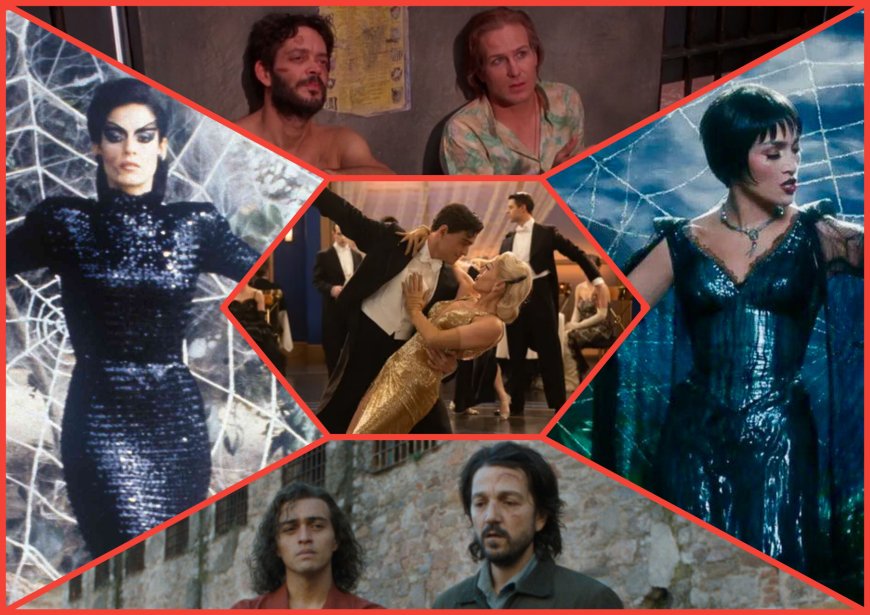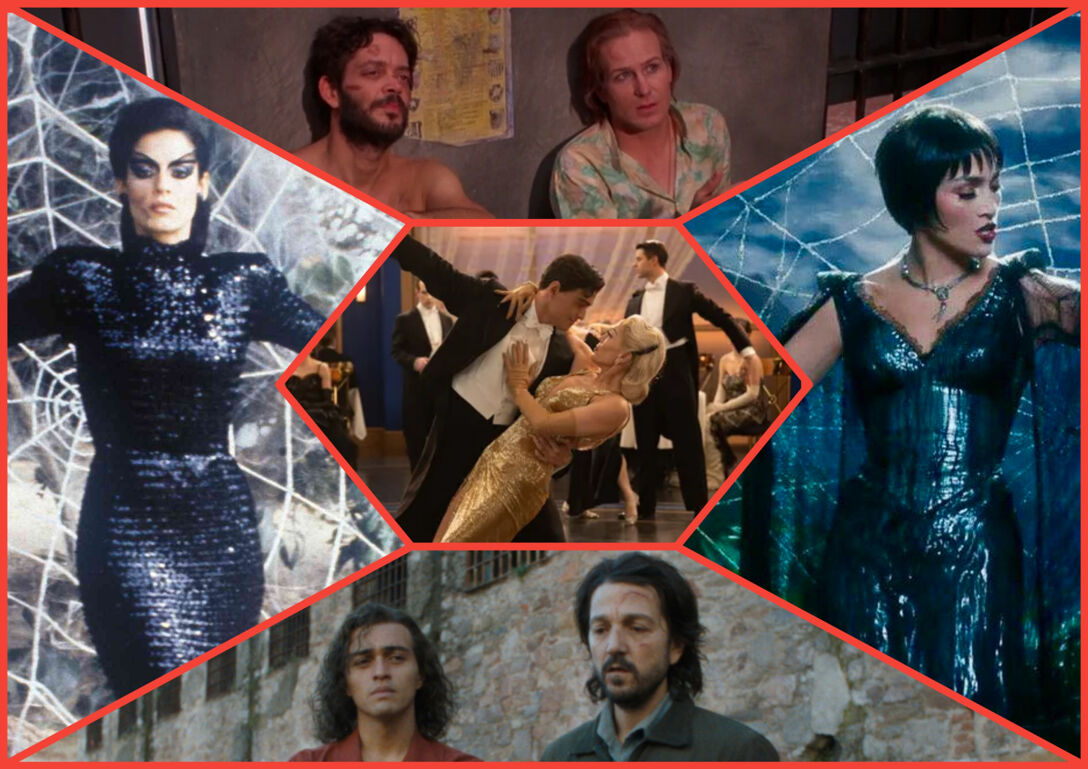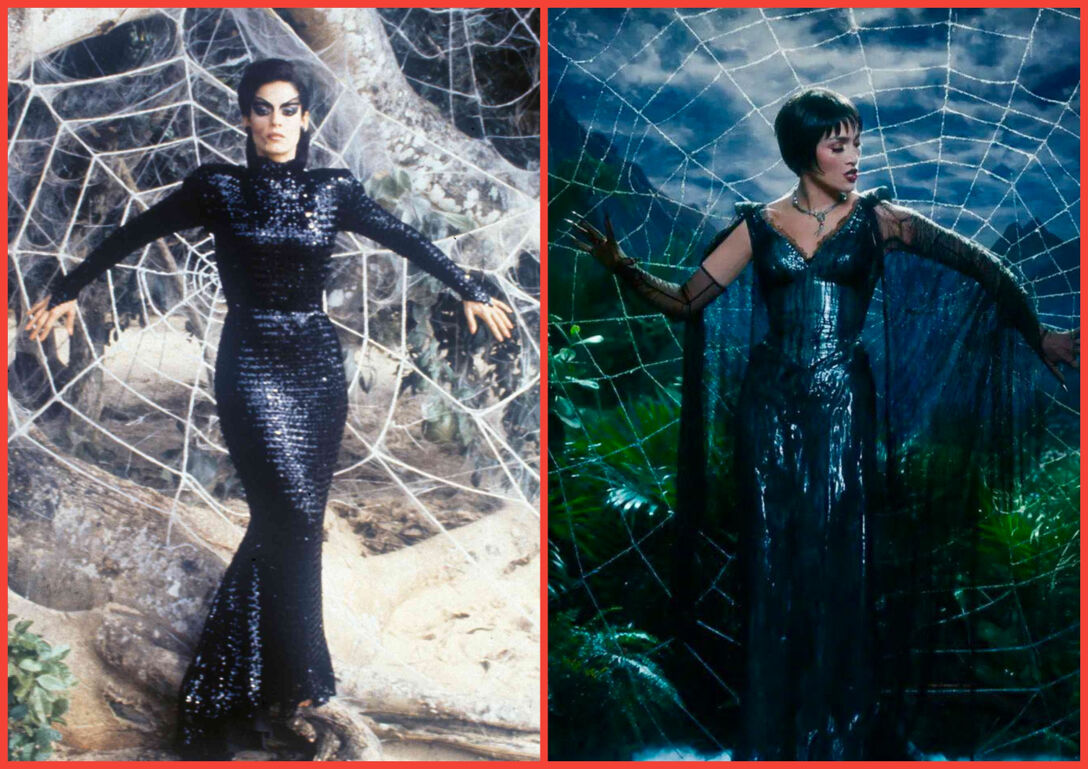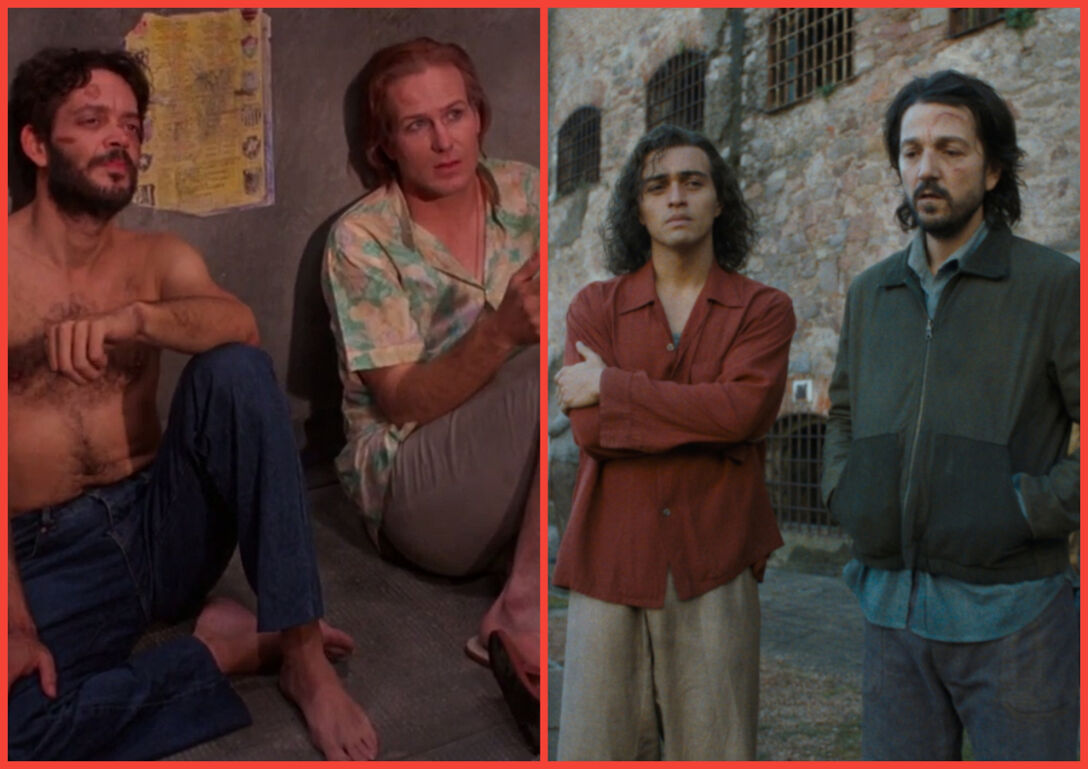How the musical Kiss Of The Spider Woman weaves a queerer web than the 1985 film
Through its many adaptations across four decades, each 'Kiss Of The Spider Woman' reflects the values of tis time.


Welcome back to our queer film retrospective, “A Gay Old Time.” In this week’s column, with the new musical adaptation just around the corner, let’s revisit 1985’s Kiss Of The Spider Woman.
This next weekend finally sees the release of the newest film adaptation of Kiss Of The Spider Woman, starring Diego Luna, Jennifer Lopez, and Tonatiuh in a star-making performance. This latest version is based on the musical stage show from 1992, which was itself based on the seminal 1976 novel by Argentine author Manuel Puig.
But it’s not the first time that the novel has been adapted for the screen. It follows the 1985 Oscar-winning movie starring William Hurt, Raul Julia and Sonia Braga. Yeah, that’s a lot of adaptations for one single work.
However, each of these productions is quite different from the other; they all take various aspects from the original novel and enhance, edit, remove or add to it whatever seems to feel most fitting for its particular form, time period, and intended audience. This week, in preparation for the release of the musical film, we’ll dive into the major differences between its adaptations, particularly how the two films handle the queerness of its protagonist and central relationship between the characters in widely different ways.
The Set-Up
Kiss Of The Spider Woman revolves around two convicts in a South American country (the actual location changes depending on the adaptation, though the novel takes place in Argentina): Molina, a femme-presenting, movie-obsessed queer man imprisoned for “indecent exposure” charges, and Valentin, a revolutionary involved in the uprisings against the government that is being kept and tortured to divulge information on his cause.
Although initially cold and combative with one another, the two form an unlikely friendship as Molina starts to recount a series of films he is thoroughly obsessed with and that help him escape his harsh reality, all of them starring a mysterious actress that appears to him in his dreams as the titular Spider Woman.
We soon learn that their dynamic is more complex that it appears as (spoiler alert!) we learn that Molina is actually working with the authorities to gain Valentin’s trust and have him pass on information. But Molina’s allegiances begin to change as he and Valentin grow closer together.
Untangling Two Spider Webs

There are quite a few notable differences between the book, the movies and the stage show, although the basic structure of the story and the character dynamics remain the same. One of the biggest changes is the relationship that Molina has with the movies he is recounting, and the central actress that stars in them.
In the novel (told in a first-person, stream-of-consciousness style from Molina’s point of view), Molina is actually recounting six different movies to Valentin, all in different genres and styles that borrow heavily from or are inspired by real-life movies, most notably horror and war films from the early century.
The 1985 film condenses them all into a wartime romantic thriller that is also Nazi propaganda whose scenes are weaved throughout the narrative. The stage version and its film adaptation reimagines Molina’s escapism into an obsession with Classic Hollywood musicals; in particular one titled Kiss Of The Spider Woman, starring famed actress Ingrid Luna (originated on stage by Chita Rivera, with JLo taking the film reins).
The musical version (both on screen and on stage) uses this device to incorporate musical numbers more organically, in addition to creating a parallel storyline (the plot of the fake movie) to underline the themes of escapism, with more concrete surrogates for our imprisoned characters to live through. Additionally, the 2025 film takes more advantage of its cinematic form, and pays direct homage to classic Technicolor musicals with the staging and style of its numbers, like An American In Paris, Singin’ In The Rain, and the Fred Astaire-Ginger Rogers joints.
A New Lens On Molina

However, the most striking differences between the different adaptations is how it treats Molina’s gender identity and the eventual sexual and romantic relationship between him and Valentin.
In all forms of Kiss Of The Spider Woman, Molina is depicted to be overly and unapologetically effeminate, and is constantly described as feeling “like a woman inside.” The subtext in the novel could easily point to Molina being a trans woman (particularly as we are so ingrained inside his mind as a first-person narrator), although the terminology and societal concept of gender at the time and place of publishing would perhaps not understand it as such.
Similarly, William Hurt’s depiction of Molina in the ‘85 film leans into feminine mannerisms and clothing, though the film perceives them to be an extension of his homosexuality rather than an alternative expression of gender or identity. However, the 2025 adaptation explicitly places Molina in a more gender-fluid place, and indulges him in the exploration of this expression, particularly through a final musical number that places Molina in the spotlight he always craved to be in.
The relationship between Valentin and Molina eventually turns sexual in each of the iterations of the story. However, in both the 1985 film and the original stage version, the exchange is transactional and non-committal. Sex and pleasure is used as a bargaining chip in each other’s search for information. They may have found a friend and confidant in each other for the duration of their stay in the cell they share, but there is a limit to it. They are too different to fully let go into each other.
The upcoming musical film upends that. We won’t get into spoilers, as you should experience this new take in a darkened theater, but their relationship becomes much deeper, tender, and authentic. Valentin and Molina go through a transformation that leads them to be able to fully see, understand, and value each other.
Only In The Movies…
It may seem strange that the story of two political prisoners seeking refuge in the world of film has spawned so many media adaptations. But Kiss Of The Spider Woman has now left its stamp in four different decades, with each of them embodying the values and ideas that society has had regarding expression, censorship and escapism.
That a new version in 2025 would still feel so relevant speaks not only to its timelessness, but also just how much of its original context has stayed the same. The attempts of political suppression will always be balanced with the freedom that art provides.
The 1985 Kiss Of The Spider Woman is currently streaming on The Criterion Channel, HBO Max, and Hulu. The 2025 Kiss Of The Spider Woman begins playing theaters everywhere on October 10.
Related
Only in the movies: 20 fascinating facts about groundbreaking 1985 film ‘Kiss Of The Spider Woman’
Did you know the original ‘Kiss Of the Spider Woman’ almost featured this closeted star?

 Mark
Mark 





